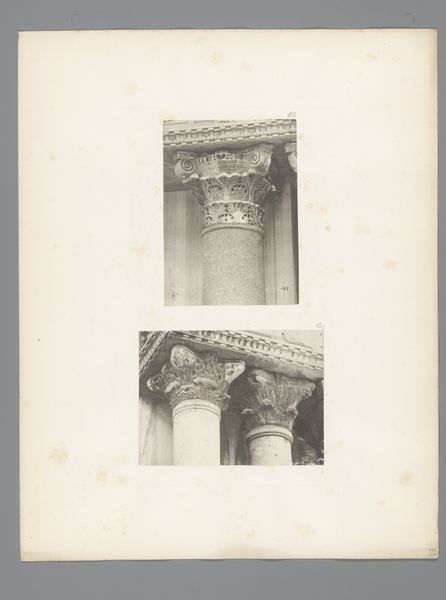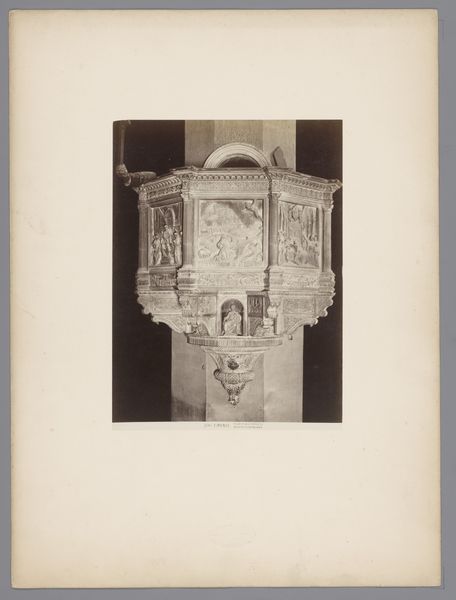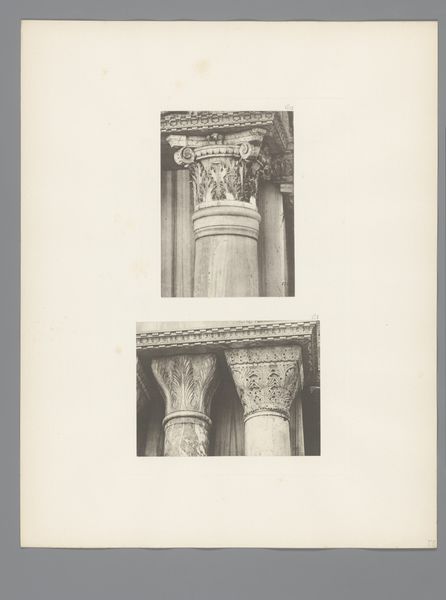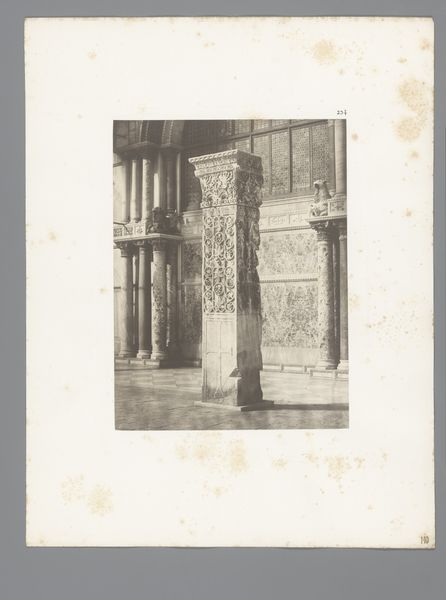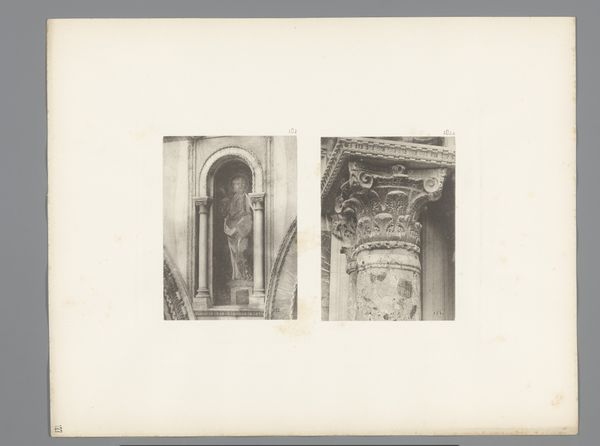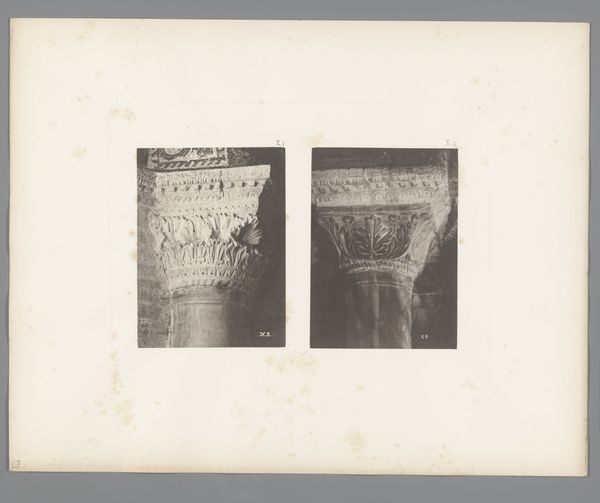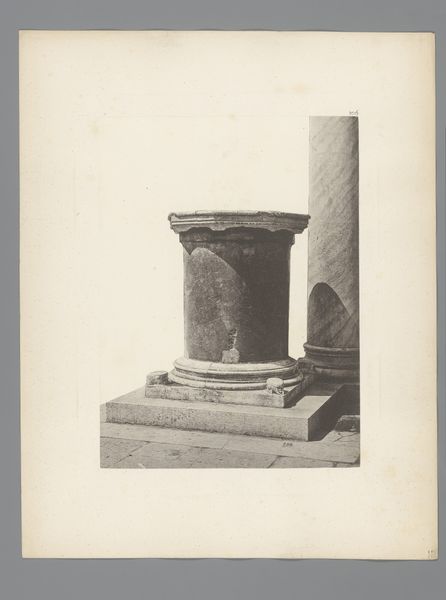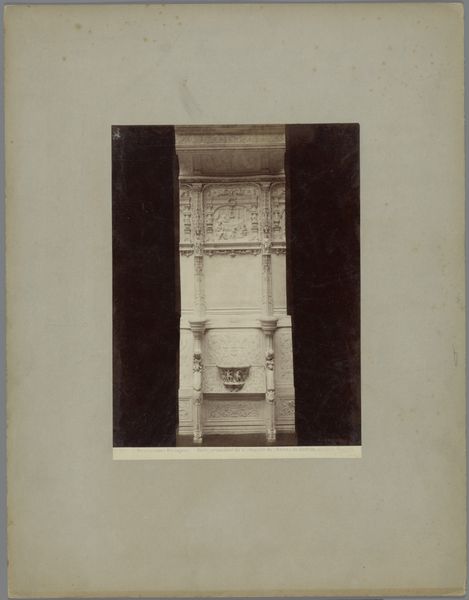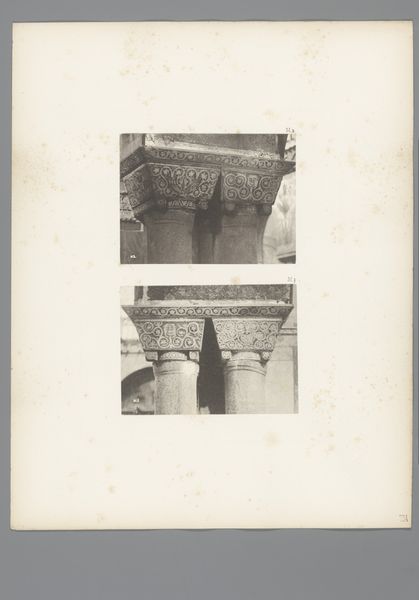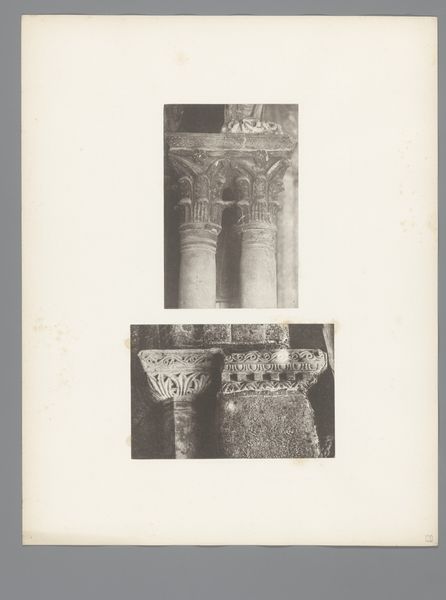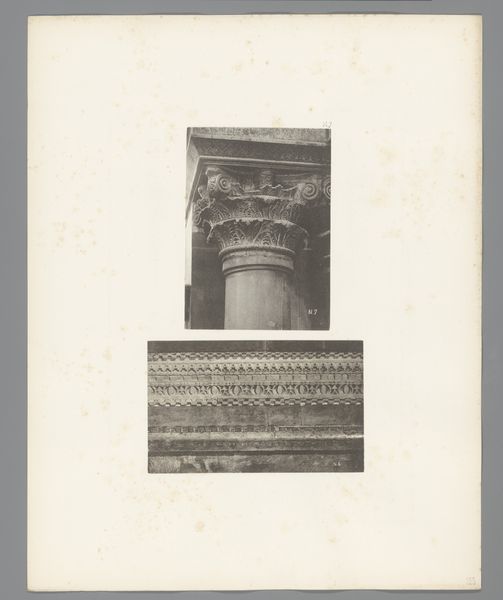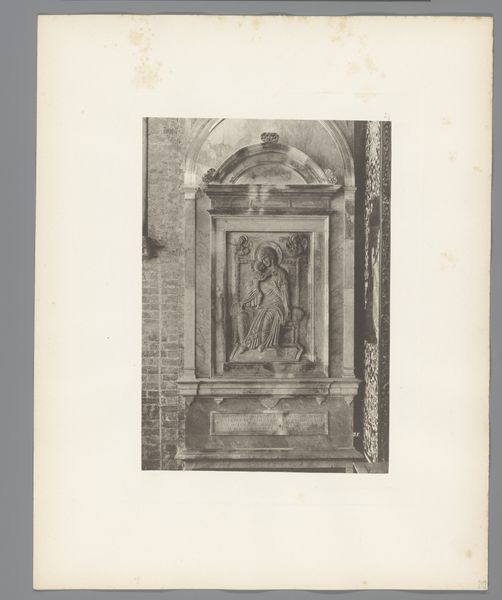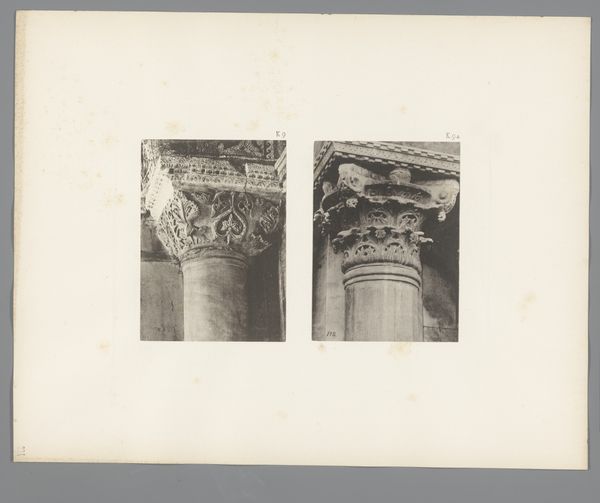
Raam en twee Korinthische kapitelen van de San Marco in Venetië before 1884
0:00
0:00
print, photography, architecture
#
portrait
# print
#
photography
#
ancient-mediterranean
#
architecture
Dimensions: height 393 mm, width 310 mm
Copyright: Rijks Museum: Open Domain
Editor: Here we have Carl Heinrich Jacobi’s photograph, “Raam en twee Korinthische kapitelen van de San Marco in Venetië,” taken sometime before 1884. The photo depicts architectural details, a window and Corinthian capitals. It’s fascinating how he isolates these elements. What strikes you most about this image? Curator: What immediately grabs me is how Jacobi's photograph invites us to consider power structures embedded within architecture. Think about Venice in the late 19th century; it was a city deeply entrenched in its history of empire and trade. The meticulous detail captured in the Corinthian capitals, symbols of classical power, feels almost like a document. What do these architectural fragments signify when extracted from the whole? Editor: I guess it prompts me to consider how these details might symbolize control. The window, with its grid, looks less like a source of light and more like a barrier, doesn’t it? Curator: Exactly! Consider the social context. The rigid structure of the window juxtaposed against the ornate capitals highlights the control exerted by institutions, be they religious or governmental. Do you think Jacobi was consciously engaging in this critique, or was he simply documenting? Editor: That’s a tough question. The photo’s stark presentation and careful composition lead me to think it was a deliberate choice. By stripping away the surrounding context, Jacobi encourages us to analyze these components critically. Curator: Precisely! This is what makes it so relevant. We must reflect on whose stories are told through grand architecture. Considering accessibility and the politics of display, are these symbols truly for everyone? Editor: This has certainly shifted my perspective on how architecture, even in fragments, can reflect and perpetuate societal power dynamics. Curator: And hopefully encourages us to critically examine the structures around us.
Comments
No comments
Be the first to comment and join the conversation on the ultimate creative platform.
